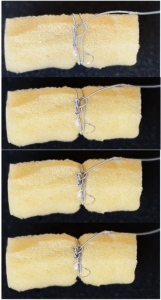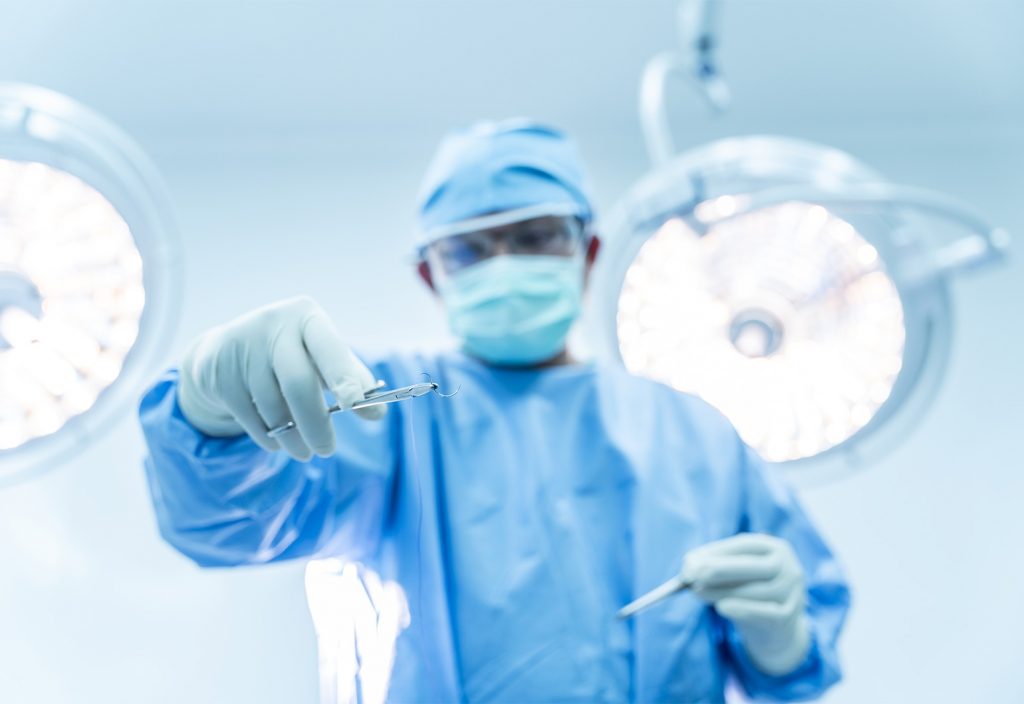Engineers from the University of New South Wales (UNSW) have pioneered a new kind of suture to help wounds heal faster after surgery.
The smart sutures developed by Dr Thanh Nho Do and his team at the UNSW Medical Robotics Lab automatically tighten over a wound without the need for human intervention.
“One of the biggest challenges with current surgical sutures is the difficulty to close defective tissue effectively with precise sewing and desired tension while maintaining strong knot tying at the surgical site,” Do told create.
“[Smart sutures] can automatically tighten defect tissues with controlled tension while offering uniform tension distribution.”
Currently, smart sutures are only a proof-of-concept, but the team has had interest from external stakeholders.
Revolutionising the healing process

Do’s smart sutures work by using hydraulic pressure to control the tension within the suture. The core of the suture is a high aspect ratio soft artificial muscle that has an inner silicone tube and an outer helical coil.
“The soft artificial muscle will expand lengthwise when receiving hydraulic pressure and contract afterward when releasing the hydraulic pressure,” Do said.
Just like a traditional suture, one end has a curved needle which the surgeon will use for the stitching, but the other end is connected to a pressure locking mechanism. By applying pressure, the surgeon can control how long the suture is, which corresponds to the desired suture tension, before finishing the stitching in a loose knot.
“The surgeon will then cut the pressure locking mechanism to release the pressure inside the smart surgical suture, which will shorten its length, resulting in the tightening of the knot to secure the wound,” Do said.
The soft artificial muscle used in the sutures was also developed by the team at UNSW. According to Do it has become the backbone of a lot of their research.
“Our soft artificial muscles can be also integrated along human muscles in the lower limbs or upper limbs to augment their performances, such as lifting heavy objects,” he said.
The team has even created a kind of soft fabric exoskeleton with the technology that aids muscle movement.
A decade in the making
Members of the UNSW Medical Robotics Lab have developed a number of fascinating technologies, including the soft gripper that create reported on last year. But smart sutures have been somewhat of a white whale for Do.
“We have [been] involved in developing minimally invasive surgical systems such as flexible endoscopic surgical robots for gastrointestinal cancer treatments in Singapore since 2011,” he said.
“We have found that tying a knot with a desired tension at the surgical site, such as inside the colon or stomach, was the most critical task. We thought, ‘What if the suture can tighten the wound by itself?’”
When his team at UNSW began developing soft robotics, Do saw the potential to use similar technology for the smart sutures. However, existing soft robotic technologies were still much too large to be used for this purpose.
It was the development of the soft artificial muscles that opened the door for this kind of technology.
“Our new soft artificial muscles can be scaled down to 0.5 mm in diameter, [and so] are a great candidate for smart surgical sutures,” Do said.
Now that the team members have shown proof of concept with the smart sutures, they are working on making them out of a biologically safe material and hope to gain ethical approval for further trials.
“The smart sutures also hold the potential to revolutionise wound closure treatment in a simple yet effective manner, especially wound closures of defect tissues within internal organs such as the stomach, bladder and colon,” Do said.
In future, the smart sutures could come with wireless monitoring technology that checks wound health and helps prevent infection.
“We could also look into incorporating advanced biomaterials such as antimicrobial agents or advanced surgical sealant to maximise the therapeutic effects.”
Building better health technologies
Soft robotics are opening the door for many new technologies within health care and Do’s team are at the cutting edge.
Along with the sutures, Do is also working with the National Heart Foundation of Australia on a new device to prevent heart failure.
“We’ve created a kind of robotic sleeve using the same soft artificial muscles,” he said. “We can then use a wireless device to improve the heart’s pumping action.”
The sleeve is less invasive than a pacemaker because it works outside the heart. It’s also easier to tailor to patients of different sizes and ages because the size of the artificial muscle can be adjusted.
“The device I’m developing and testing will be smaller, more comfortable, less expensive and potentially more effective at helping the heart to return to its normal pumping motion,” Do said.
“It can hopefully give people more time and improved health while waiting for a heart transplant.”
